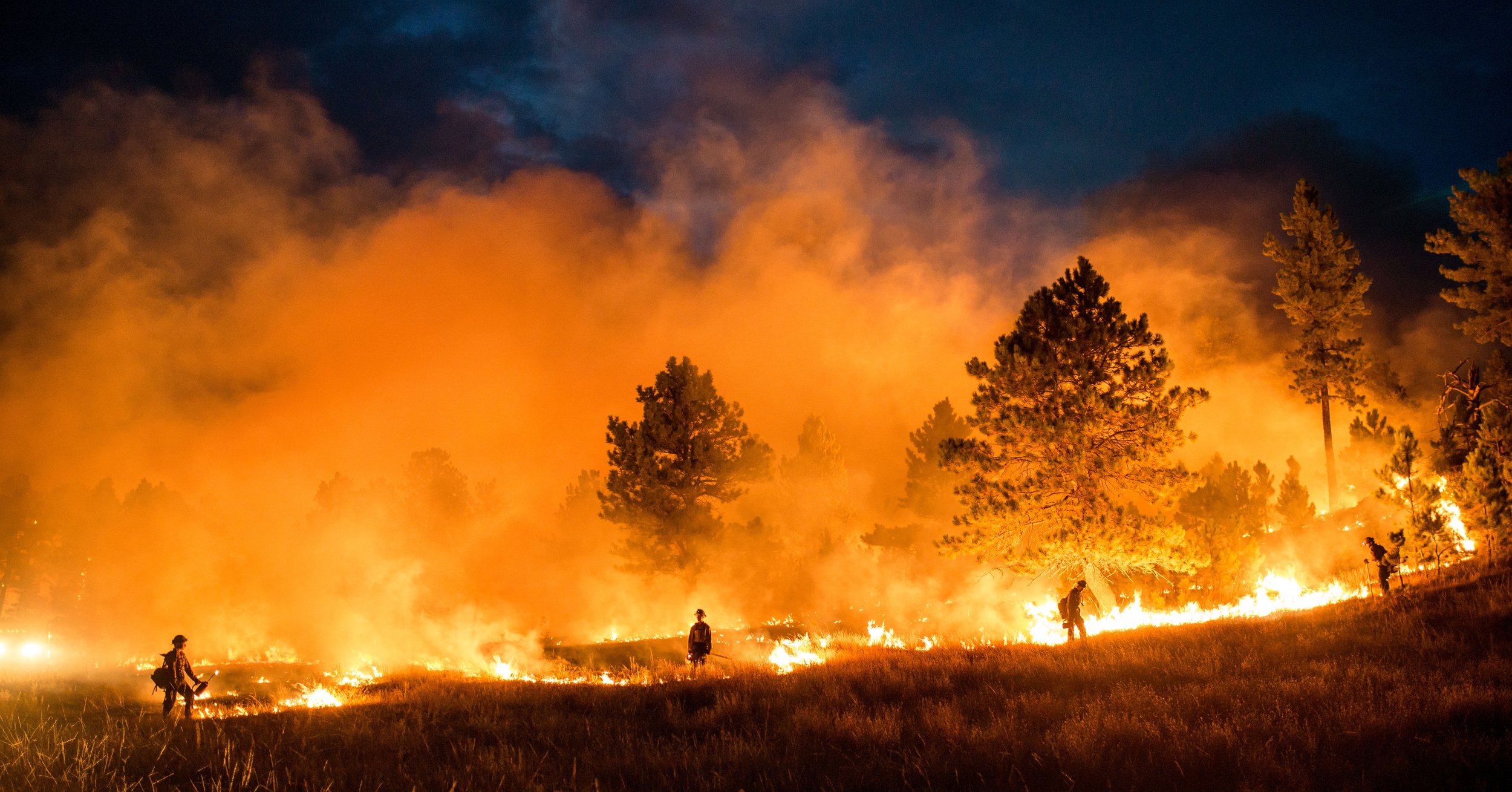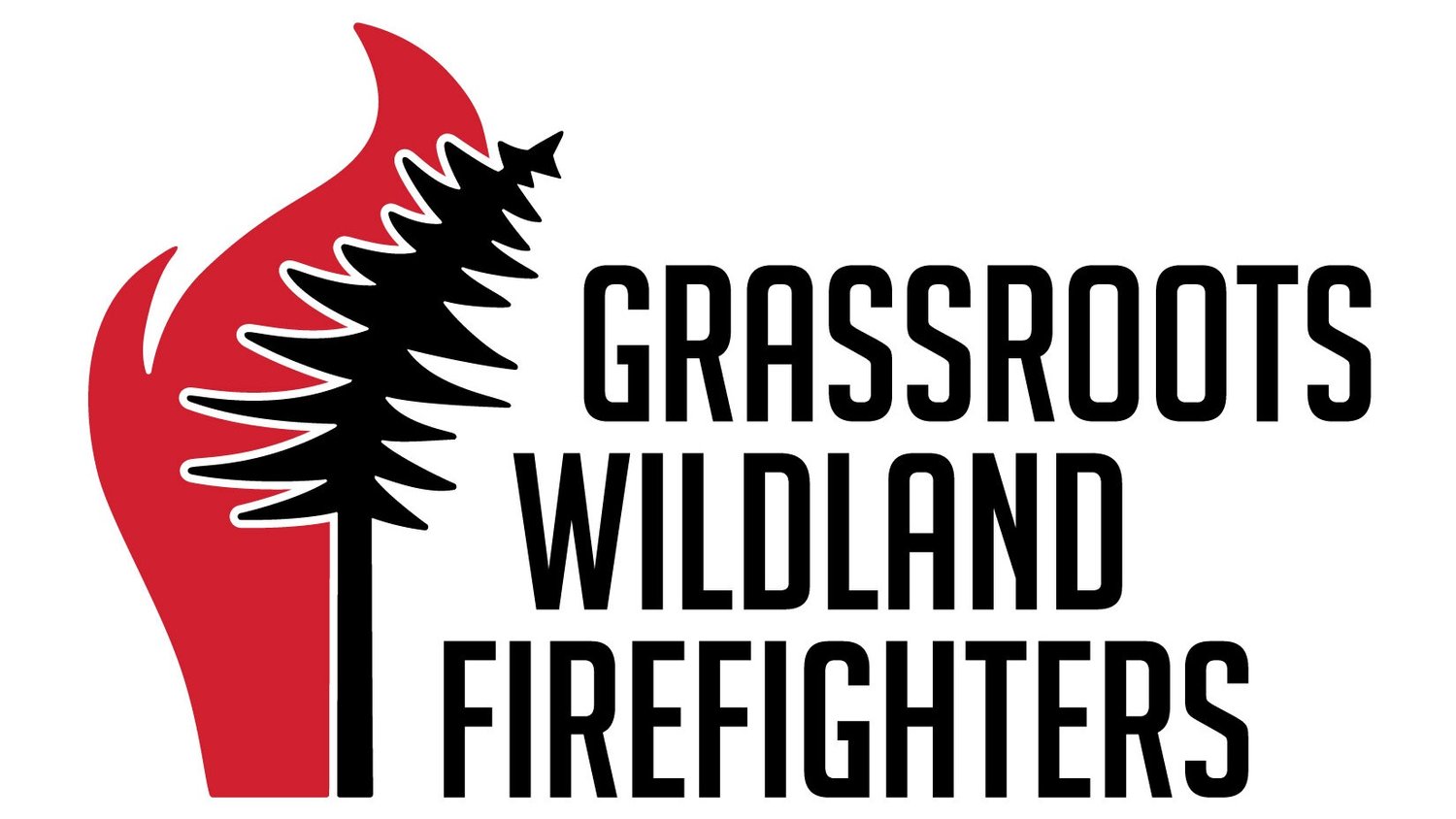
Hazard Pay
Hazard pay is a 25% addition to a firefighter’s base pay — applied only to assignments classified as “hazardous.”
This 50-year-old compensation system does not account for today’s professional workforce, for the demands of a year-round, increasingly severe fire season on a warming planet, or for the unanticipated hazards of a global pandemic.
Why Hazard Pay No Longer Works
Hazard Pay is Outdated
When the system of hazard pay was created in the 1970’s, wildfires were smaller and less frequent, and firefighting was not the professionalized industry it has become now, in the era of mega and even gigafires. Firefighters today are routinely exposed to hazards in prescribed burning, in project work such as roadside hazard tree removal, and in assisting with a broad range of non-fire emergency responses. In 2020, wildland firefighters were exposed to a hazard simply by traveling across county and state lines to respond to fires, or when staying in hotels while on assignment: the hazard of a deadly virus.
Firefighters are also frequently injured on the job, and unable to work on the fireline and losing 25% of their pay while recovering. Women who get pregnant or are raising young families, don’t want to be away from their homes for dozens (if not 100+) nights a summer, also lose 25% of their pay, making family life unsustainable with the current system. This increased burden on women and injured firefighters is another outcome from a system that relies on hazard pay.
Pay must reflect the reality: that we are routinely exposed to hazards on and off the fireline. A 21st century system of pay will account for this continual risk by paying firefighters more.
Other wildland firefighting agencies (Cal Fire, municipal fire departments, Oregon Department of Forestry, Washington Department of Natural Resources) long ago abandoned the practice of providing special pay only on the fireline; firefighters for these agencies are paid as firefighters at all times. Federal wildland firefighters are now seeking pay parity with these agencies.
The Definition of “Hazard” is Incomplete
So what, exactly, counts as “hazardous” under the system of hazard pay?
Tree climbing qualifies as a “hazard” only if firefighters climb to a height of 50’ or more with no scaffolding. Free climbing 49 feet? Not hazardous.
Mutual assistance responses, in which wildland firefighters help with rescue operations, traffic control and emergency medical care for traffic collisions -- not hazardous.
Ever jumped out of a plane? No? That’s probably because you considered it too dangerous. The federal government, however, does not allow hazard pay for parachute jumps.
Staying in a crowded hotel in a Covid-19 “hot zone” at the height of the pandemic is not an official “hazard.” Nor is entering a fire camp packed with other firefighters from all over the country or having to stop at dozens of gas stations and stores while traveling to a fire, all during the outbreak of a deadly virus.
Running a chainsaw to fell large, burned, or standing dead trees (incidentally called “hazard trees”) is not a hazard unless a fire is nearby.
Driving on dangerous, winding, unmaintained roads with sheer drop-offs in remote parts of our forests and parks is not a “hazard” while on patrol or in travel status -- only on a fire.
In an ultimate stroke of irony, hazard pay does not apply to prescribed burns, which can be as volatile as wildfire. Though smoke from planned burns contributes significantly to firefighters’ increased risks of cancer and cardiovascular disease, and while homes have been lost and members of the public killed from prescribed burning gone awry, this isn’t classified as “hazardous” work.
Helicopters have crashed* (killing firefighters) and firefighters have died when crushed by falling trees during prescribed burn operations -- yet this work is not a “hazard.”
Wildland firefighters face daily exposure to hazards on and off wildfires; the nature of the job is hazardous. Yet the current pay structure does not account for this pervasive risk.
*Those in the helicopter were in fact receiving hazard pay for low-level flight.
Hazard Pay Incentivizes Risky Behavior and Reactive Land Management
Opportunities for earning hazard pay vary substantially between fire seasons, creating an unpredictable income that makes it extremely difficult for firefighters and their families to plan financially. Entry-level firefighters, whose base pay begins at just $13.45 an hour, will take on as many fire (“hazard”) assignments as they possibly can, just to make ends meet.
Firefighters who work more than 1,000 hours of overtime end up in a state of cumulative fatigue that can lead to mistakes and accidents on the fireline. Trapped in a vicious cycle of overwork, it can be a short leap between a hazardous situation and a fatality fire.
Meanwhile, as fire seasons grow in duration and intensity, firefighters’ personal relationships suffer, and they end up burned out mentally, physically, and emotionally. A staggering 55% of wildland firefighters report thoughts of taking their own lives, and firefighters’ rate of death by suicide is 30 times that of the general public.
Additionally, valuable project work -- such as thinning the understory or conducting prescribed burns to create a healthier, more fire-resilient forest -- goes untouched in favor of assignments offering hazard pay. When proactive forest management goes undone, the land is more vulnerable to devastating fire. And when these high-intensity fires begin, firefighters necessarily spring into the reactive stance of fire suppression. Thus the cycle continues.
| Agency | Hazard Pay | Professional Pay |
|---|---|---|
| US Forest Service | 25% | |
| Bureau of Land Management | 25% | |
| US Fish and Wildlife | 25% | |
| Bureau of Indian Affairs | 25% | |
| National Park Service | 25% | |
| Municipal Fire Departments | X | |
| Oregon Department of Forestry | X | |
| Cal Fire | X | |
| Colorado Division of Fire and Prevention | X | |
| Washington DNR* | $2/flat rate |
*While performing emergency work under the Incident Command System (ICS) (PO20-004), two dollars ($2.00) is added to an employee’s regular hourly rate of pay and will be included in the calculation of overtime. This rate adjustment is in lieu of other forms of additional compensation including but not limited to , call-back, standby at any time following dispatch, stand down, shift differential, split shift differential, assignment pay, schedule change, and pay for rest periods of less than five hours. See Details Here
The federal government is one of the last professional firefighting services still using this arcane system. Hazardous duty is the nature of the work of wildland firefighters, who respond nationally and internationally to every type of emergency incident, risking their lives and health to save other lives and protect property and our natural resources.
Federal wildland firefighters deserve a living wage on par with that of their state and municipal counterparts. It’s time to make a change.

